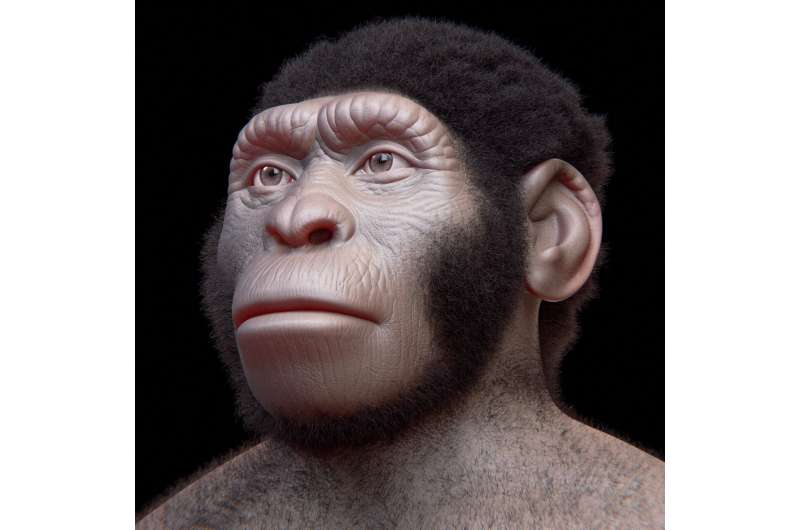This article has been reviewed according to Science X's editorial process and policies. Editors have highlighted the following attributes while ensuring the content's credibility:
fact-checked
reputable news agency
proofread
South Africa's Lee Berger, palaeontology action hero

Donning Indiana Jones hats and astronaut-like suits, Lee Berger is something of a paleontology action hero.
The South Africa-based, US-born explorer has turned the study of ancient life upside down, discovering two new species of hominid in less than two decades—hit findings that earned him fame and envy.
On Monday he was at it again.
In several scientific papers, Berger announced evidence that Homo naledi—one of our Stone Age cousins he previously unveiled—buried their dead and carved symbols on tomb walls.
These would be the oldest interments ever found.
The findings question the current understanding of human evolution, implying that our small-brained, tree-climbing relatives who roamed earth more than 200,000 years ago had cognitive abilities usually associated with modern humans.
"Homo naledi tells us we're not that special," Berger told AFP, perched on a rock outside a cave in the Cradle of Humankind, a world heritage site near Johannesburg, which is the 57-year-old's scientific playground.
"We ain't gonna get over that," he quipped.
'Rosetta Stone'
The smash revelation is likely to ruffle some feathers in the small, competitive world of paleontology, where Berger has previously faced accusations of lacking scientific rigor and rushing to conclusions.
Some of his colleagues take decades to turn hypotheses into published findings.
"Lee Berger is a very special person," said French palaeoanthropologist Bruno Maureille.
"He may be moving a little too quickly in relation to the long time it takes to understand this type of context".
Bombastic announcements tend to create buzz and attract much-coveted research funding.
Berger's earlier discoveries won the interest of National Geographic, which named him "Explorer in Residence" and featured his work in television shows and documentaries.
"There's always a temptation and a desire to say, 'look I've found something amazing, something truly remarkable and I'm going to tell everyone about it'" said Dominic Stratford, a geo-anthropologist also leading excavations at the rich South African site.
Berger, who in 2016 was named one of the world's 100 most influential people by TIME magazine, is unfazed.
If "you don't want to call that a grave, don't call that a grave. But it's a grave," the white-haired researcher said with a smile, in a thick US accent.
He compared his latest discovery to the "Rosetta Stone".
Mickey Mouse watch
Growing up in a rural part of the southern US state of Georgia, he dreamt of traveling to space as a child, but instead seemed headed for a quiet career as provincial town doctor, lawyer or pastor.
"That was your window of what bright kids did," Berger said, sporting a Mickey Mouse watch.
He described his young self as an absent-minded student overcome by boredom.
That was until he read a book titled "Lucy", after the famous 3.2-million-year-old Australopithecus found in 1974 in Ethiopia.
Paleontology then became his passion and field of study.
He started out in east Africa, but after being told there was "nothing left to find" in the region, he set his sights on South Africa.
He arrived as apartheid was drawing towards its end, opening up new opportunities.
In 2013, he discovered the richest deposit of hominid fossils on the continent and introduced the world to Homo naledi, named after the "Rising Star" cave where the bones were found.
A feverish phone call in the middle of the night won him support from National Geographic, the paleontology equivalent of winning the lottery.
The excavations were documented live on social networks. He uploaded all data collected online and made the fossils available to anyone interested.
Journalists flocked to the site, miniature bones started being sold in souvenir shops and a documentary about his exploits won an Emmy nomination.
A "media circus" far removed from pure science, according to his detractors, who believe that the fossil hunter turned star "sold his soul to the devil".
© 2023 AFP





















